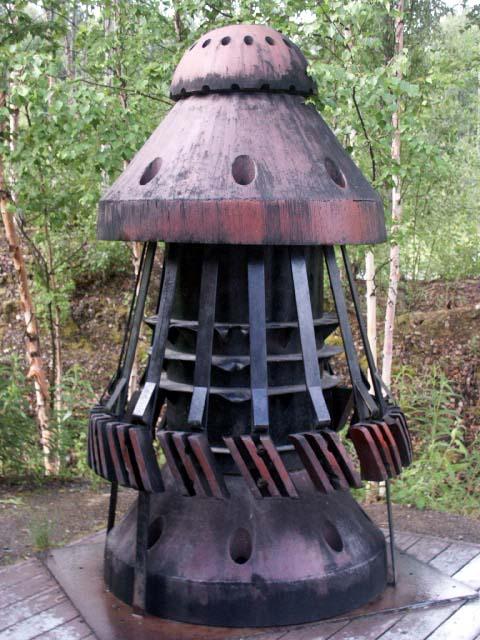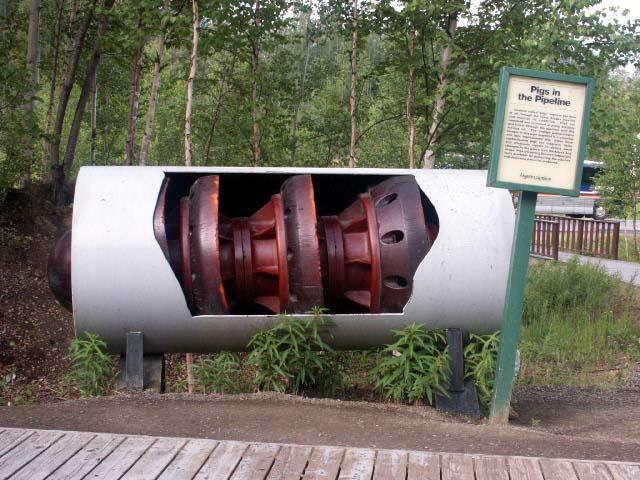Pipeline Information
- Diameter-48 outside
- Thickness-between 0.462and 0.562
- Wieght- 1400lbs per 40' section
- # of sections- 100,000
- Total weight- 550,000 tons approx.
- Capacity- Maximum axial force of 2.52 million pounds
Oil temperature in the pipe flows at 140F causing thermal expansion, which is a change in pipe length due to a change in crude oil temperature.
Outside Temperatures range from -80f to 100F causing each 40' section of steel to expand and contract. Each section expands 0.031 with each 10.5F increase in temperature and vice versa for contractions. To reduce expansion and contraction stress, the pipeline was placed in a zig-zag formation.

http://www.technet.pnl.gov/dme/structural/pipeline.stm
http://www.jpo.doi.gov/interest.htm
Insulation
The pipeline runs above ground for 420 miles, and runs below ground for 380 miles. The insulation of the pipe protects the hot oil from eroding soils surrounding the pipe in below ground areas and prevents increase in temperatures in elevated areas where the pipeline runs above ground over permafrost.
- Elevated pipeline, thickness-3.75 in.
- Refrigerated below-ground pipeline, thickness-3.2 in.
Pig
A mechanical device which is pushed through the pipeline by the oil. Several types of pigs are used to improve flow characteristics, inspect for dents and wrinkles, inspect for pipeline corrosion, and measure pipeline curvature

http://community.webshots.com/album/19903429pziXlBQKMj/2

Click on Arrow to Return to Structural Component Diagram
Home .Introduction Structural Components Pipeline Problems Bibliography

